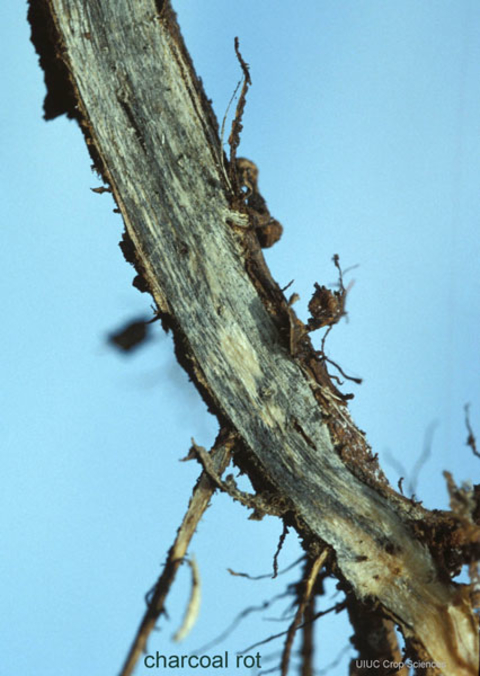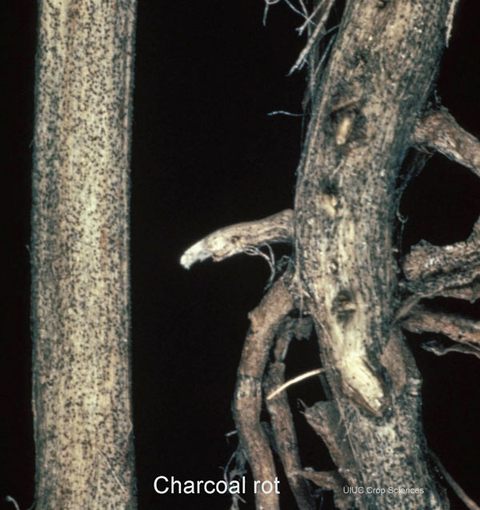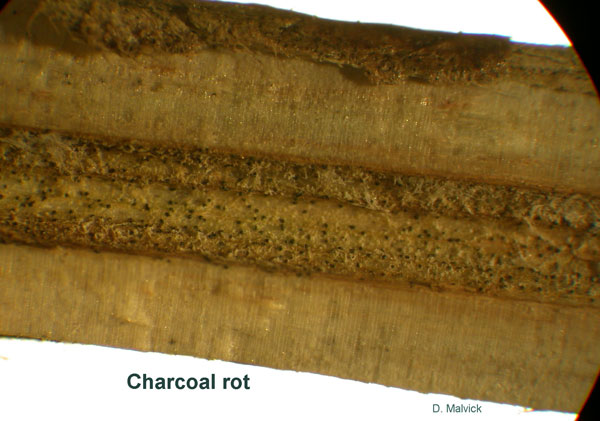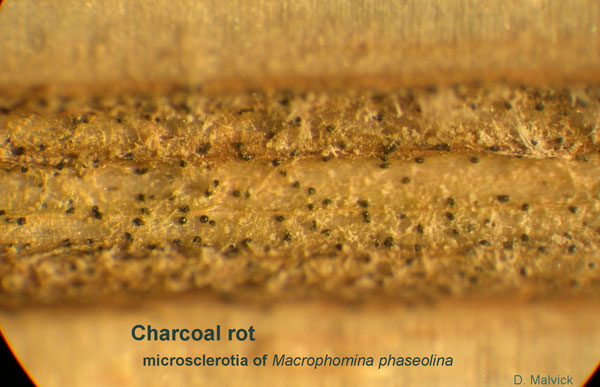Charcoal rot is a soilborne root and stem disease of soybean that develops in the mid to late summer when plants are under stress, especially heat and drought stress. Infected plants may die prematurely and are often wilted and stunted. Significant yield losses can occur. The disease is common in the southern states and occurs in the Midwest in seasons with hot, dry conditions. Charcoal rot was first confirmed in Minnesota in 1999 and North Dakota in 2002, and may be an expanding soybean disease in the northern Midwest. Many crops are affected by charcoal rot, including corn and sunflower.
Symptoms
Symptoms of charcoal rot generally occur during or after flowering, however, seedlings may also be affected. Brown lesions may form on the hypocotyl of emerging seedlings. After mid-season, leaflets on infected plants may be small and ultimately wilt and turn brown. The taproot and lower stem may become streaked with light gray. Small black specks may form beneath the epidermis and inside the lower stem and taproot to give them a charcoal-sprinkled appearance. Reddish-brown discoloration can also develop in the pith and vascular tissues of the root and stem.
Conditions and timing that favor disease
Plants can be infected at any time during the growing season. Much infection may occur early in the season, but symptoms typically do not develop until after flowering when plants become stressed. Hot, dry weather favors disease development. Disease is most severe where plants have been growing under conditions of stress or injury.
Causal pathogen
Charcoal rot is caused by the soilborne fungus Macrophomina phaseolina. This pathogen has a wide host range that includes corn, sunflower, and some weeds. The fungus overwinters in residue of host tissues and can survive for at least two years in dry soil. The pathogen can be spread by contaminated seed and soil.
Disease management
Manage fields to reduce or avoid drought stress. Reduced tillage may reduce charcoal rot, perhaps due to cooler soils and less moisture stress. Rotation with crops that have relatively low susceptibility to charcoal rot, such as cereal grains, may be beneficial. Reduced seeding rates may also reduce drought stress and charcoal rot. Soybean cultivars may exhibit different levels of susceptibility, but none are fully resistant to this disease.
Reviewed in 2018





